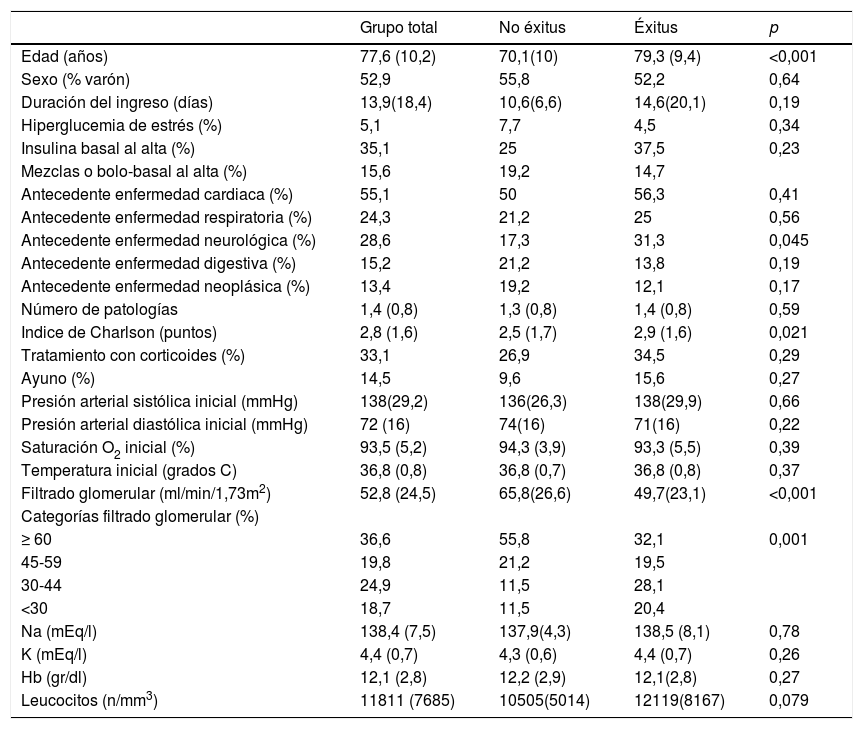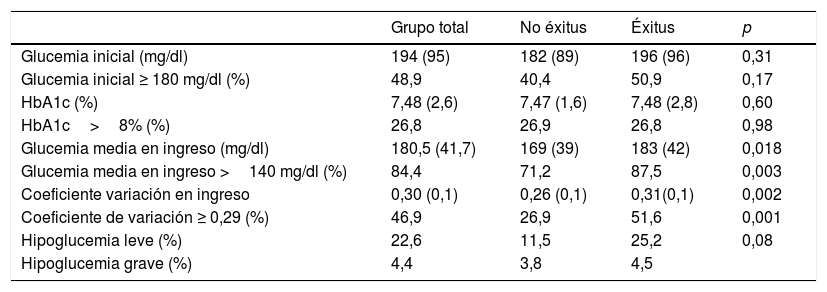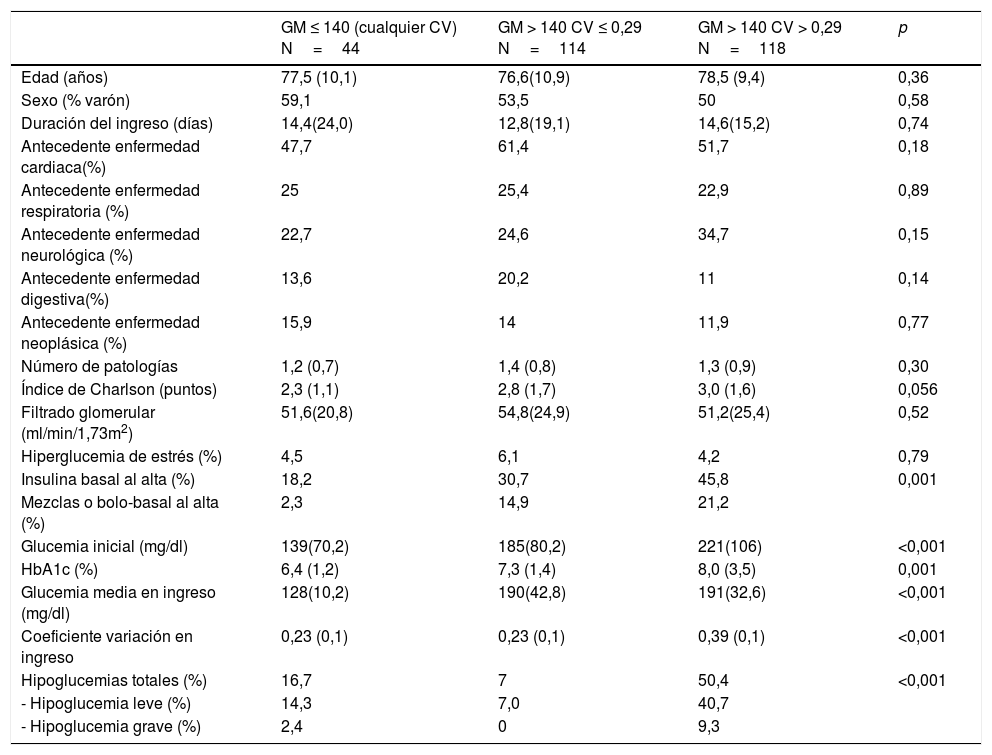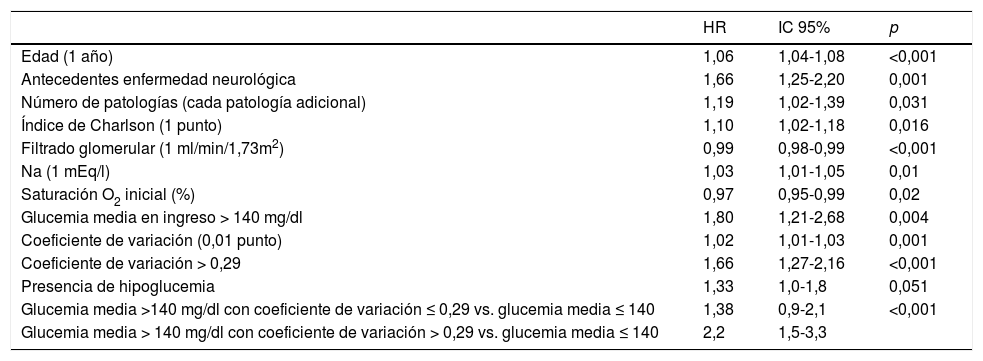El objetivo fue evaluar la importancia de glucemia media (GM) y variabilidad glucémica (VG) durante la hospitalización sobre la mortalidad tras el alta.
Material y métodosEstudio de cohortes retrospectivo longitudinal analítico. Se incluyeron pacientes dados de alta del Servicio de Medicina Interna con algún diagnóstico relacionado con la diabetes. El pronóstico evaluado fue la mortalidad. Se recogieron durante el ingreso variables clínicas, analíticas y relacionadas con el control glucémico hospitalario (GM, VG e hipoglucemias). La VG se midió con el coeficiente de variación (CV).
Se calcularon las tasas de mortalidad por cada 1000 pacientes-año y se compararon con curvas de Kaplan-Meier. La determinación de los factores predictivos de mortalidad se realizó mediante regresión de Cox.
ResultadosSe incluyeron 276 pacientes con edad media 77,6 (DE 10,2) años. La duración mediana del seguimiento extrahospitalario fue de 2,7 años.
En análisis multivariante, una GM > 140 (HR=1,72; IC 95% 1,14-2,61; p=0,01) y un CV > 0,29 (HR=1,52; IC 95% 1,12-2,06; p=0,006), no así la presencia de hipoglucemias, se asociaron a incremento del riesgo de mortalidad de forma aditiva e independiente. Tener una GM > 140 simultáneamente con un CV > 0,29 incrementó las tasas de mortalidad (123 vs. 317 por 1.000 pacientes-año; p <0,001) y el riesgo ajustado de mortalidad (HR=2,70; IC 95% 1,71-4,27; p<0,001) respecto a tener una GM ≤ 140mg/dl.
ConclusiónLa presencia simultánea de GM y VG elevadas constituye una potente herramienta de estratificación del riesgo de mortalidad tras el alta hospitalaria.
The aim of this study was to evaluate the impact of mean blood glucose (MBG) and glycaemic variability (GV) during hospitalisation on mortality after discharge.
Material and methodsWe conducted a retrospective longitudinal analytical cohort study that included patients discharged form a department of internal medicine with a diabetes-related diagnosis The evaluated prognosis was mortality. During hospitalisation, the patients’ clinical, laboratory and glycaemic control-related variables were recorded (MBG, GV and hypoglycaemia). The GV was measured with the coefficient of variation (CV).
We calculated the mortality rates for every 1000 patient-years and compared them with Kaplan-Meier curves. We determined the predictors of mortality by performing a Cox regression.
ResultsThe study included 276 patients with a mean age of 77.6 (SD, 10.2) years. The median outpatient follow-up duration was 2.7 years.
In the multivariate analysis, an MBG >140mg/dl (HR, 1.72; 95% CI 1.14–2.61; p=.01) and a CV >0.29 (HR, 1.52; 95% CI 1.12–2.06; p=.006) but not the presence of hypoglycaemia were additively and independently associated with an increased risk of mortality. An MBG >140mg/dl with a CV >0.29 increased the mortality rates (123 vs. 317 per 1000 patient-year; p <.001) and the adjusted mortality risk (HR, 2.70; 95% CI 1.71–4.27; p<.001) compared with having an MBG ≤140mg/dl.
ConclusionThe simultaneous presence of a high MBG level and CV constitutes a powerful tool for stratifying mortality risk after hospital discharge.
Artículo
Diríjase desde aquí a la web de la >>>FESEMI<<< e inicie sesión mediante el formulario que se encuentra en la barra superior, pulsando sobre el candado.

Una vez autentificado, en la misma web de FESEMI, en el menú superior, elija la opción deseada.

>>>FESEMI<<<












